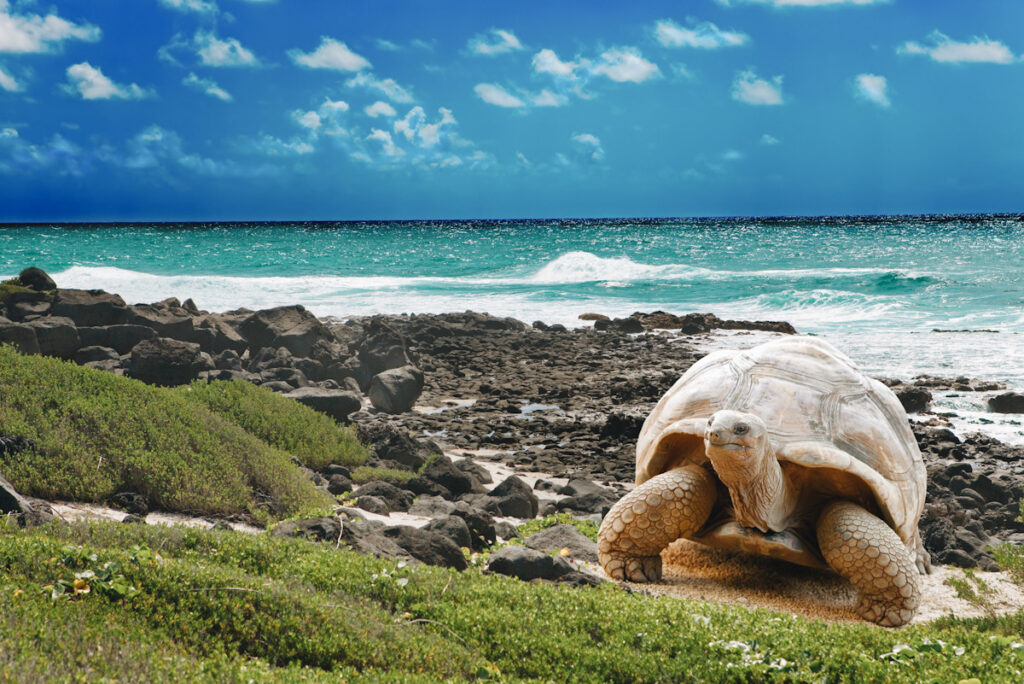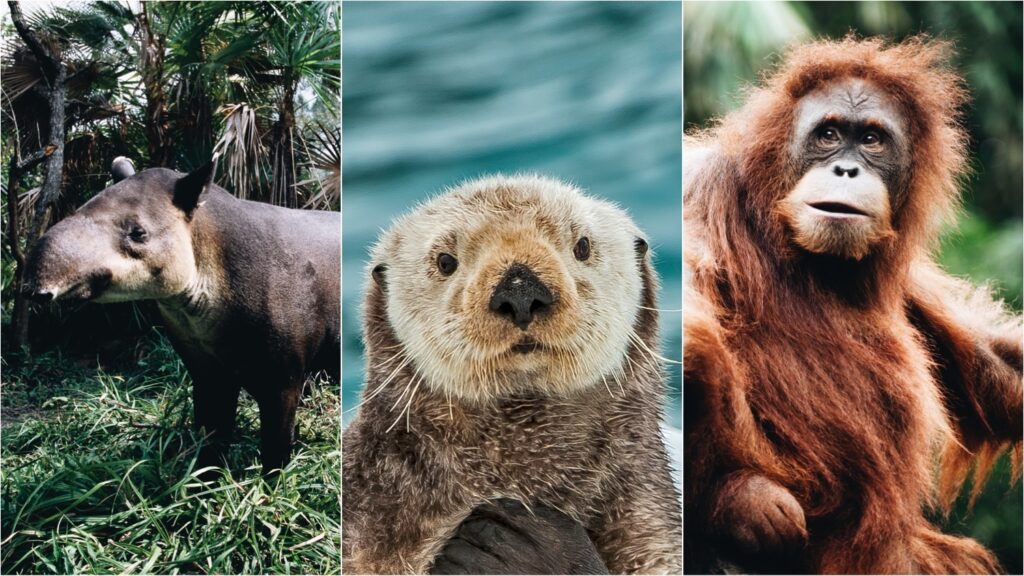According to the United Nations, humankind has less than ten years to prevent irreversible damage caused by the climate crisis. As world leaders scramble to prevent the earth from overheating, there’s one weapon that could be used to save the planet. And it’s been with us all along: animals.
Biodiversity is integral to mitigating climate change. But, in many ways, we’ve failed to protect it. A 2020 report published by the World Wildlife Fund found that we’ve lost 68 percent of all global species in less than 50 years. Human-driven activities such as industrial agriculture, burning fossil fuels, and deforestation are causing nature’s decline. As much as droughts and shrinking glaciers are climate issues, so too is biodiversity loss. But just how can animals help fight the climate crisis?
Climate solutions
Human-caused carbon emissions are widespread. In 2019, carbon dioxide (CO2) made up about 80 percent of human-caused GHG emissions in the U.S. Carbon fuels global warming by trapping heat in the atmosphere, causing the planet to warm faster.
Solutions to combat climate change run the gamut from reducing fossil fuels dependence to addressing individual consumption habits. Scientists have even conceived carbon capture technology, which works to capture and store CO2 waste. (Though, whether or not it’s effective in the long run is hotly debated.)
Biodiversity and global warming
There are natural climate solutions, too. The average tree can capture about 48 pounds of CO2 each year, according to the Keystone 10 Million Trees Partnership, a conservation initiative. In a single year, one acre of forest can capture double the emissions produced by the annual mileage of driving a car.
Grasslands, peatlands, salt marshes, mangroves, seagrass beds, and the ocean are all also carbon sinks, capable of absorbing and storing carbon from the atmosphere. The animals who reside in these ecosystems help keep them in working order.
But the impacts of climate change and human activity are throwing these ecosystems out of balance. Environments can become unlivable, causing animals to relocate. These invasive species often have negative effects on their new habitats, killing off native organisms or competing with them for food and other resources.
How land animals help fight climate change
A balanced ecosystem can prove beneficial in the fight against climate change. According to Yale School of the Environment, terrestrial and aquatic ecosystems remove half of all annual atmospheric carbon emissions. Here’s how some of the world’s most important species are helping to tackle the climate crisis.

Elephants
Elephants are essential for maintaining forest ecosystems. They stomp out smaller, invasive plants, allowing larger trees–capable of storing more carbon–to flourish.
A study published in the journal Nature Geoscience found that carbon-storing vegetation would decline by seven percent if forest elephants went extinct. While this sounds minimal, it equates to about three billion tons of carbon.
They’re also carbon sinks. The average African elephant can capture more than 9,000 tons of carbon in its lifetime. After the animals die, their bodies decompose and become sediment. Over time, the sediment—and trapped carbon—turn into rocks, minerals, and even fossil fuels.
Due to threats like habitat loss and poaching, African elephant populations are declining. About 90 percent of the gentle giants have been lost in the past century. As a result, African forest elephants are now critically endangered while African savanna and Asian elephants are listed as endangered.

Primates
There are more than 600 species in this diverse order, including humans, chimpanzees, orangutans, apes, monkeys, and lemurs. While humans are well-versed at creating carbon emissions, non-human primates are skilled at helping to reduce them.
Non-human primates are the keepers of forests. The fruit-loving creatures help regenerate tropical rainforests by dispersing the seeds of flowering plants and trees. A 2017 study published in Science Advances found that if Madagascar’s lemurs went extinct, a decline in native trees would be likely. Losing Thailand’s northern gibbons would have similar ramifications.
A study published in Nature Scientific Reports examined a 30-hectare patch of forest in Thailand’s Khao Yai National Park. Researchers discovered that one-third of stored carbon was sequestered in trees that grew from seeds dispersed by fruit-eating animals, including primates.
“Forests cannot reach their maximum carbon storage potential without the wildlife species that make up their seed dispersal networks,” the researchers noted.

Turtles and tortoises
Much like elephants, lions, and bears, turtles and tortoises are keystone species, meaning that other native flora and fauna in their natural home depend on them for survival.
The herbivorous creatures help to disperse seeds and trample fast-growing vegetation, albeit slowly. Their small size makes them invaluable to restoring small patches of forests. A 2017 study used tortoises to disperse seeds in patches of the Brazilian Atlantic Forest, which were too small for larger seed-dispersers like monkeys.
Known as the gardeners of the Galápagos, giant tortoises help create many habitats for other species. In fact, the seeds of some plant species can only germinate after they’ve been digested by tortoises.
These ancient reptiles’ numbers are dwindling. The Galápagos was once home to around 250,000 giant tortoises, but now approximately 15,000 remain. More than half of the world’s turtle and tortoise species are now threatened with extinction.

Birds
Birds are among the most important indicators of a healthy environment while disruptions in bird populations are often a sign of problems.
From curassows to toucans, the frugivorous fliers disperse the seeds of carbon-storing trees via their droppings. A 2015 study published in Forest Ecosystems found that more than 80 percent of tropical trees rely on animals, such as birds, for seed dispersal.

Tapirs
Large animals like tapirs also spread seeds, making them vital assets in restoring degraded forests. A 2019 study, published in the journal Biotropica, found that tapirs actually disperse three times more seeds in degraded forests. Another study, published in 2020 in the Journal of Applied Ecology, highlights the importance of animals in reforesting these degraded areas. It showcased how feeders can be used to attract fruit-loving mammals and birds, which consume the fruit and then later disperse them in their excretions, to certain areas.
Sea creatures help fight climate change, too
Carbon sequestration isn’t just happening on land, it’s happening in the water too. Ocean dwellers like whales and mollusks are also helping in the fight against global warming.

Whales, sharks, and fish
Sharks and whales are both major carbon sinks. The latter can absorb an average of 33 tons of carbon during its lifetime, which is stored in its body even after death. (In comparison, swordfish, tuna, and sharks are composed of 10 to 15 percent carbon.) Commercial whaling prevents this carbon from being sequestered on the ocean floor, causing its release back into the atmosphere once the whales are killed.

Sea otters
Sea otters, a keystone species of the ocean, help sequester carbon in underwater kelp forests. Found on rocky coastlines, kelp forests are important for marine biodiversity. They provide homes to smaller sea creatures and help feed many different fish and invertebrates. They also suck up a lot of carbon. Kelp, or large brown algae, can absorb between one to ten billion tons of carbon dioxide each year.
Sea otters help protect kelp forests by feasting on sea urchins, which—if left unchecked—would eat away kelp forests. A 2012 study published in Frontiers in Ecology and the Environment, found that kelp forests that are protected by sea otters can store 12 times more carbon than those without.
In addition to storing carbon in their bodies, marine life excretes the carbon when they defecate. The carbon waste makes its way to the bottom of the ocean where it fertilizes plants. Some ocean-dwellers like coral and clams even mineralize carbon as calcium carbonate, which helps form their skeletons and shells, respectively.

Mollusks
Mollusks like clams, oysters, and mussels are another savior of the sea.
Bivalves help to filter ocean pollutants like nitrogen out of the water, storing it in their shells and tissue. Just one oyster can filter 50 gallons of water per day. Oysters help mitigate the effects of climate change by combating rising sea levels. They form reefs, which act as barriers on the coastline, stopping soil erosion and slowing dangerous currents.


